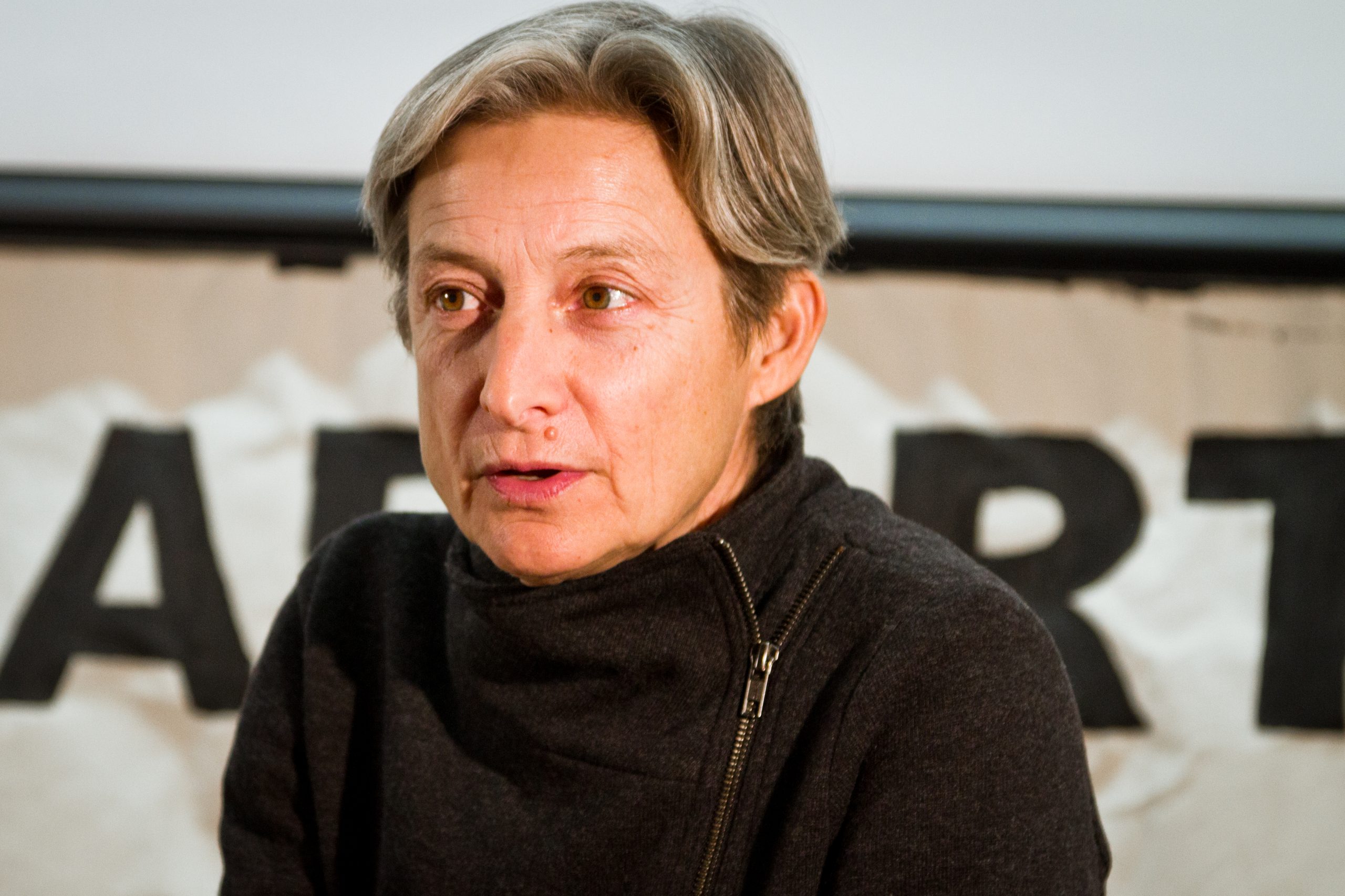While you watch Fox News, radical leftwing lesbians are fighting your culture war.
How Gender Atheism Saved My Body

The god of gender demands the blood sacrifice of our biological sex.
I want women to live long, healthy, and happy lives; in service of that goal, I educate women regarding women’s health concerns, including, recently, on the social media platform TikTok, the fact that women have different heart attack symptoms from men. I explained that this is due to a categorical difference between men and women. Women, I emphasized, are not shorter men, men with additional organs, or men with different hormones or chromosomes, and we must not imagine ourselves as such.
One does not need to be a radical feminist in order to recognize that men and women are different, that this difference is biological and lifelong, and that these differences are predictable and often advantage men and disadvantage women (two distinct phenomena). For making this obvious point, I have been slurred and threatened by transgender activists as a “TERF”—a “Trans Exclusionary Radical Feminist.”
As a person who has recovered from gender dysphoria, I have sincere compassion for the experience of believing that one is living in the “wrong” body. I lived as a trans man for several years, in community with other gender non-conforming people in the Bay Area, where the culture is open to non-traditional expressions of identity. I went to UC Berkeley, where Judith Butler, author of the seminal Gender Trouble, teaches, and where I majored in Gender and Women’s Studies. At one point, a significant other and I (both trans men at the time) attended a brunch with a group that included Julia Serano, a trans woman biologist whose book Whipping Girl argues that transphobia is a form of misogyny and that rights for trans people must be central to feminism. I found this to be a compelling argument for why feminists must make space—both conceptually and physically—for trans women.
I attended graduate school at San Jose State University, where I was active in the Secular Student Alliance club Atheists and Skeptics for Knowledge (ASK). I stopped cutting my hair short in grad school, not imagining that this would affect my relations with other trans people. However, the longer my hair got, the more often I was accused of backsliding from transness—including by people I had welcomed into the church of trans—and I found myself on the receiving end of Gender Theory 101 lectures.
Throughout this period, I sought psychotherapy. As I worked through my underlying trauma, I gradually was able to let go of my gender dysphoria and settle into myself as a woman. It is worth noting that, for many, trans identity overlaps with the medical condition of gender dysphoria but is not defined by it; that is, many trans people would say they do not experience gender dysphoria, and not everyone with gender dysphoria is trans-identifying. But where it is not a disability, being trans is like a subculture or a belief system—one which we are not obligated to participate in.
Gender Atheism
Attested as early as 2013, “gender atheism” is philosophical skepticism toward or rejection of the concept of gender identity. Gender atheists judge gender to be an undemonstrated assertion that can’t be proven by observable reality. We consider such concepts to share the status of religious beliefs, dependent on the existence of a spiritually created consciousness separate from and superior to the body.
Gender atheists doubt the claim that gender identity exists as a separate axis of human variation on par with sex, national origin, or sexual orientation. It has not been substantiated as a conceptual or anatomical entity, or as something distinct from external social pressures. Definitions given for gender are logically incoherent, synonymous with sex, or expressive of unmeasurable and unquantifiable desires— or, usually, several at once. Gender has been variously defined as socially and culturally imposed sex roles; the sex you want to be (even though sex is also said to have no fixed meaning); “who you go to bed as” (as distinct from who you actually are when you go to bed); and what you “identify” as, meaning which stereotypes you like.
None of these definitions involves a measurable phenomenon. Gender is a phantasm that can meld brains, minds, souls, clothes, and behavior. Gender identity giveth sexual freedom and societal gender roles taketh away that freedom. Gender, to put it bluntly, is a god that we are being ordered to worship, and whose most committed devotees physically sacrifice healthy sex organs to. I am frequently told that sex and gender are different concepts, but this contention is usually followed with a reference to a binary gender model which can be mismatched with a binary sex model to form a quaternary model wherein most people fall into the two functional configurations (“cis”) and a tragic few (“trans”) fall outside the functional configurations, and must therefore be converted at all costs, before they die at their own hands. This is the bill of goods I as an emotionally troubled young woman was sold, wrapped in medical-sounding language and delivered with a kiss.
Underlying all of this is the insinuation that the mystical element of “gender” plays a role independent of more clearly defined variables: personality traits, social expectations, fashion, biological sex, sexuality, and values. When I ask biological men who call themselves women if there is a term they would permit me to use to describe myself that excludes them—aside from “ciswoman,” which implies that my womanhood is a function of a psychological opinion on my part—I am told that I may call myself, “assigned female at birth” (AFAB). But this begs the question of what “female” means, and on what basis that assignment was made: was it really, as advocates insist, just arbitrary, or were there obvious physical indications available that lead obstetricians to arrive at entirely replicable results? Confronted with such questions, the new new word given for the category that includes trans men and non-trans women, but excludes trans women, is (brace yourself) “gynoid.” Torture language this much and it transforms from description to incantation.
Gender is a religion masquerading as a science—phrenology on the other side of the skull.
I am regularly sent links to articles where this or that confused research psychiatrist, on the hunt for “the gender organ,” tries to use an MRI to document brain bumps and grooves somehow to prove that these differences correlate to what kinds of dresses women prefer in August. You cannot start from your desired conclusion—that there is a neurological, sexually dimorphic basis for human social behavior—and then try to prove it by identifying sexually dimorphic bodies. That’s cheating. It is pseudoscience to start from the conclusion that self-identified trans people are different, and then run studies to identify a perhaps random difference, and then conclude that this difference must somehow explain something because, if it didn’t, why is there a difference? What other reason could women and men possibly have to be anatomically different! If you believe this horseradish, wait until you hear about dowsing rods.
I am living proof that it is possible to recover from gender dysphoria without permanently transitioning or irreversibly cutting my body. While in the grips of that dysphoria—which is classified as a mental illness—it was critically important to me to have the freedom to alter my presentation as less feminine and more masculine. It was equally critical that I had access to intensive, long-term therapy. Young adults need support in seeking professional care, and safety in exploring their freedom—ostensibly part of the purpose of universities. The current paradigm is the opposite of safe for young gender non-conforming people, who are being sterilized, exposed to untested cross-sex hormone regimens, and, at an alarming rate, are having healthy organs amputated that they may want and need later. If I had allowed a doctor to lobotomize my sex in my early twenties, I would regret it now in my thirties. I am one person. How many is too many?
The American Mind presents a range of perspectives. Views are writers’ own and do not necessarily represent those of The Claremont Institute.
The American Mind is a publication of the Claremont Institute, a non-profit 501(c)(3) organization, dedicated to restoring the principles of the American Founding to their rightful, preeminent authority in our national life. Interested in supporting our work? Gifts to the Claremont Institute are tax-deductible.
Some stories aren't being told.
Today’s ravenous gender radicals are poised to eat their own.



